What do cats hate? Plenty of things!
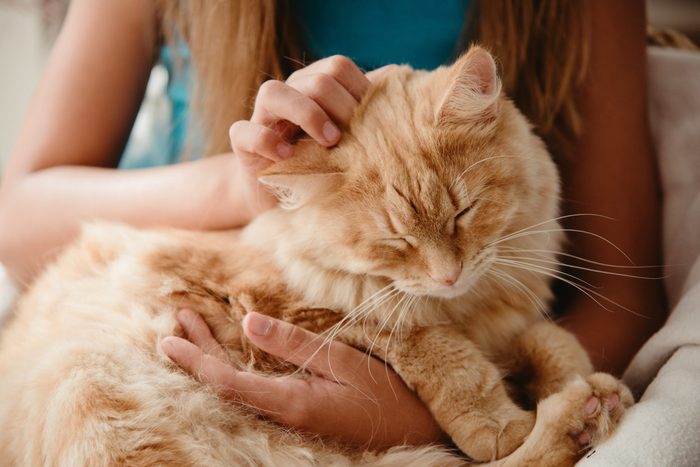
20 Things You Do That Your Cat Actually Hates

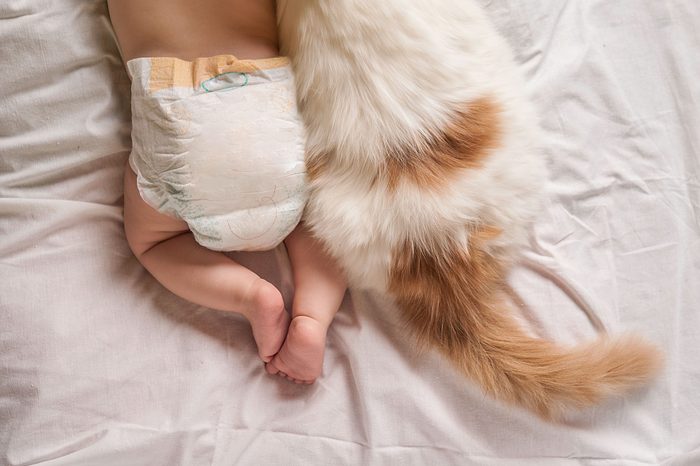
New babies in the home
You love your new baby, and you love your cat, but don’t necessarily expect them to love each other—at least right away. “Big life changes, such as moving or welcoming a new family member, can be stressful for cats,” Vitale says.
All is not lost. Cats can learn to tolerate babies, and they even like baby talk, but you need to introduce them slowly. The ASPCA offers tips for helping cats get used to the idea of sharing their homes with a small human, including playing baby sounds before you give birth to get your kitty accustomed to what’s coming.

Small or big changes
A new baby counts as change—one of the biggest your cat will encounter—but pretty much any change is met with some side eye or disapproval. Even moving the litter box will throw them for a loop, and should be done slowly if at all; the ASPCA recommends scooting it just a few inches per day toward its new location.
If you have to move to a new house or apartment altogether, your worries may be bigger. Safety is a big concern, since anxious cats are more likely to run away or hide in inappropriate places. Complete a detailed safety check of your new home—including securing windows and doors and making sure your cat is tagged and microchipped—before moving in.
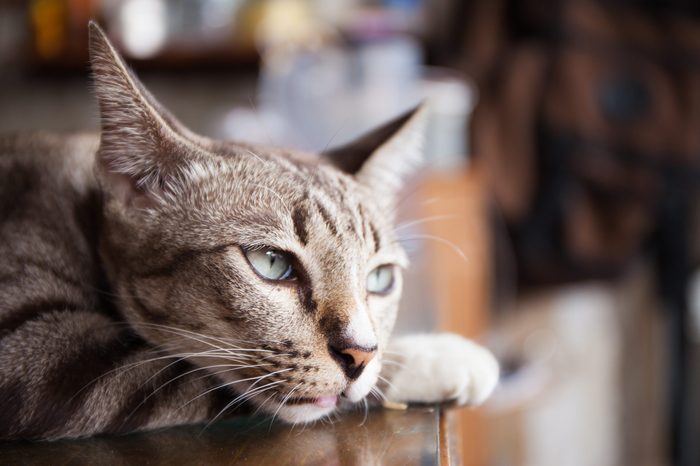
Boredom
Big changes might be stressful for cats, but they don’t want every day to be exactly like the last. “Having a home environment that never changes can also be boring for cats,” Vitale says. Plus, when they don’t experience any day-to-day variety, they’ll be extra freaked out when your grandparents visit or a plumber comes to work on your kitchen sink.
“Giving your cat new interactive toys and forms of enrichment can help stimulate their mind, and may also make them more comfortable with new situations when big life changes do occur,” Vitale says.
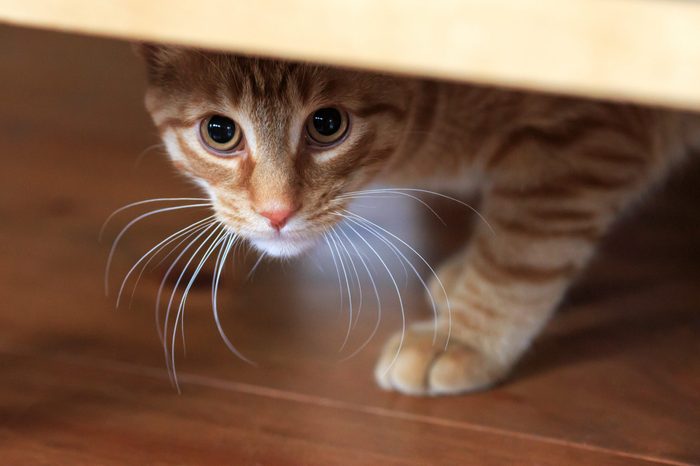
Loud noises
Fireworks, thunderstorms and construction noises can be confusing and scary for pets. The best remedy, according to Vitale, is distraction. She suggests training your cat to sit and stay in a specific location, like on a mat, and then practicing the behavior when the loud noises start. (Shockingly, training them is not one of the things cats hate.)
“After the cat is a master of sitting and staying, then have them do this when loud noises are occurring,” she advises. “Give them treats for engaging in the sit/stay behavior and for ignoring the loud noises. Eventually, they will learn the loud noises are nothing to be afraid of, and they will be more interested in earning treats than hiding.”
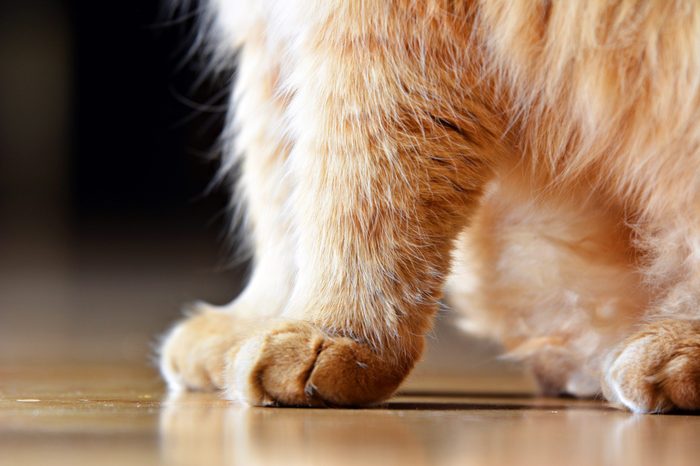
Certain textures
Because cats are so particular, you can use their sensitivities to help guide their behavior. Most cats hate walking on aluminum foil, heavy plastic or sticky surfaces—so use these quirks to your advantage.
Do you want to keep cats off counters or prevent them from scratching your furniture? Make sure the surface is extra unwelcoming by spreading tin foil in your kitchen or putting furniture-safe tape on your couch. Vitale adds: “Make sure to reward times the cat is on the floor, and not on those surfaces, with treats and praise.
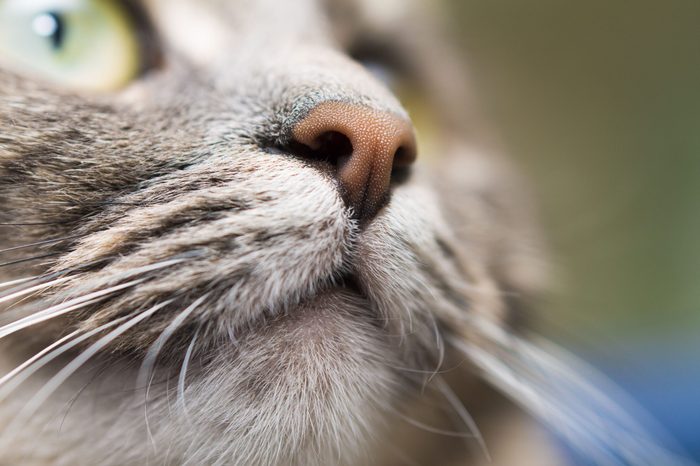
Strong smells
Does your cat give you a wide berth when you’re wearing your favorite perfume? “They have excellent noses,” Vitale says. Things “with a strong odor, such as perfume or deodorizers, may be off-putting, and cats may avoid locations with these scents.” (Including you!)
The issue goes both ways, Vitale says. “You can also use scents cats enjoy to attract them to locations like their scratching post.” The expert says many cats really like catnip, lavender and silver vine.

Wearing pet clothes
Animals aren’t dolls, and they don’t like being dressed in clothes for human amusement. Halloween costumes and Christmas hats might get a laugh from your friends, but they can be very stressful for your cat. If you’re really determined to do this, Vitale says you should get your cat used to the idea slowly.
“Work up to the cat wearing the clothing by first just putting treats on the item, so they associate it with something good,” she says. As a next step, Vitale suggests putting the clothing on your cat for just a minute or two. Offer plenty of treats and praise to avoid making your cat mad. “Slowly work up to the clothing being on the cat for longer and longer,” she says.

Tummy rubs
Cats often love to be petted, but there are certain spots to avoid until you know your cat’s preferences. Their belly is a big one. “Most cats don’t like to be stroked on their tummies,” Turner says.
How can you tell they’re not a fan? “They will (try to) depart the scene or hit you with one of the front paws (with claws extended!),” he says. If they’re really freaked out by the belly rub, your cat might bite. (Turner emphasizes that cat bites need to be thoroughly disinfected).
Of course, cats are all different. “Other cats love when a person pets their belly,” Vitale says. Just be ready to back off if your cat gets annoyed, and always try to follow the 3-second rule for cats: Pet them for 3 seconds, then pause. If they stay close, seem at peace or nudge you to keep going, give them some pets for another 3 seconds.
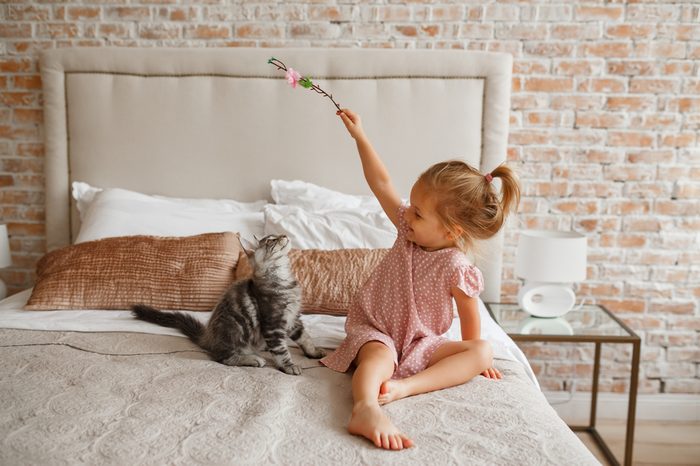
Interacting with new people and children
Cats are wary, so take things slow and pay attention to your cat’s reactions around an unfamiliar person—especially a child. To prevent injury to kids and cats alike, instruct children to be gentle and calm and to avoid screaming or running at a cat. Adults should heed that advice, too.
“One way to see if the cat is amicable to being pet after just meeting them is to let the cat sniff your hand, and then watch how they behave,” Vitale says. “If they want to interact they will most likely approach you and engage in social behavior after sniffing you, such as rubbing on you or trying to sit with you.”
She adds that if they don’t want to interact they’ll usually walk away or ignore you, in which case it’s best to let them have their space. This can be difficult to get kids to understand, so always be present when kids and cats are interacting for the first time.
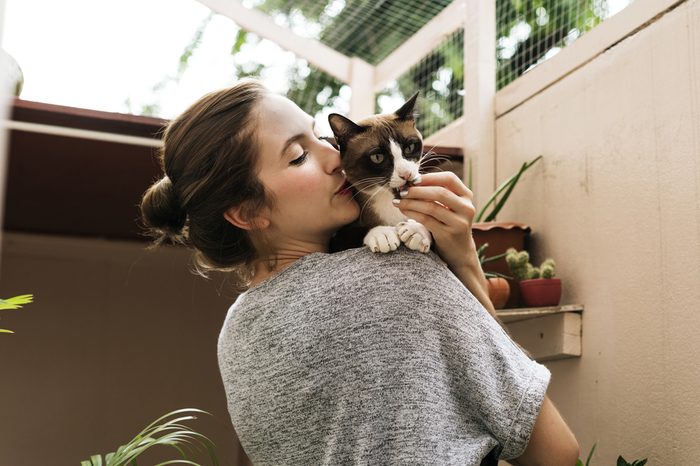
Being picked up
If you get the stiff-arm when you try to pick up a cat, know that cats “certainly don’t like being held against their will,” Turner says. But most cats will forgive you for coming on too strong from time to time, if they’re used to socializing with people and they trust you. “My research has shown that they accept most advances by their keepers, giving us the impression that we are in charge.”
But, he adds, for the sake of your long term human-cat relationship, it’s always better to wait until the cat comes to you for attention. That’s especially true with unfamiliar cats.
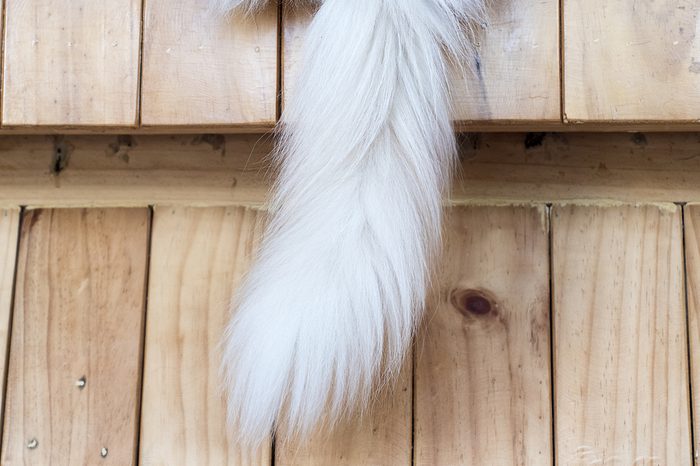
Having their tails held
Never grab a cat, or any animal, by the tail. Not only can you can hurt them, Turner says cats really dislike having their tails held or pulled. Adults should know this, but help children understand this cat fact as soon as possible.
“If they’ve been socialized to people as kittens, then they usually like being tickled around their necks or stroked down the back,” Turner says. Make sure you’re on the lookout for signs your cat is unhappy, because cats’ moods can change on a dime.
“If a cat does not like the interaction they are receiving, the cat may have dilated pupils, a rapid, fast twitching tail, ears that are flat against their head, fur that stands up on its ends, and may make hissing or growl vocalizations,” Vitale says.
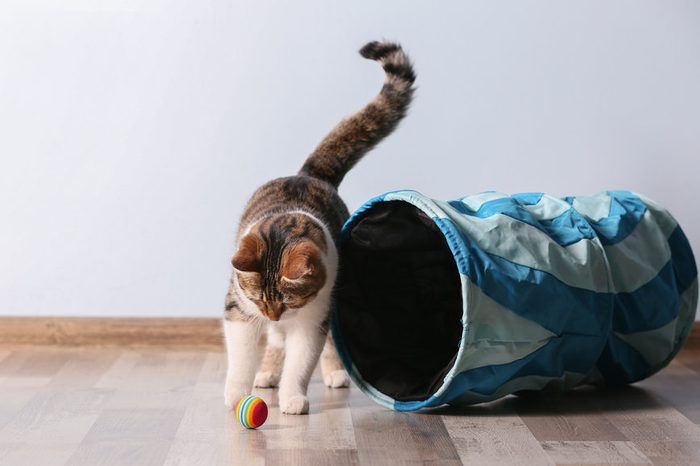
Being left alone
Dogs aren’t the only pets that get lonely and bored when you spend the whole day at work. Vitale advises cat owners to give their pets food puzzles when they’re alone—they’ll be too busy solving problems for snacks to miss you much. She also recommends providing a variety of toys, a cat window perch or even a protected outdoor space (often called a catio).
Some people even consider a second cat. “Although not all cats will do well with another cat, many will readily accept a companion given a proper introduction,” Vitale says. “A new owner could also consider adopting sibling kittens or cats, which may already have a well-established social relationship.”
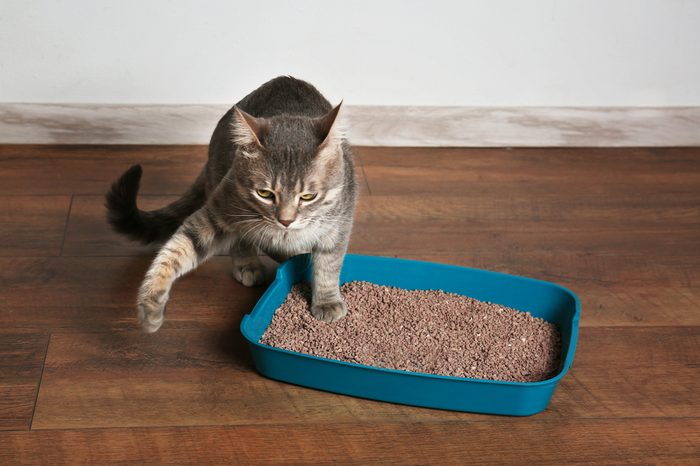
Not enough litter boxes
Is your kitty doing her business in the wrong spots? Most likely, your cat feels there’s not enough litter boxes in the home, or the existing ones are not up to snuff. Vitale suggests having more litter boxes.
“Cats are typically more relaxed and secure in areas that have their scent,” she says. “Usually, the rule is you want at least one litter box per cat plus an extra, although some cats may need more than this.” Spread the boxes around the house so they have plenty of personal space.
Vitale recommends buying unscented cat litter, and cleaning the boxes with unscented products. Cats do not like chemical smells that prevent them from detecting their own scent, so buying perfumed litter can actually be counterproductive.
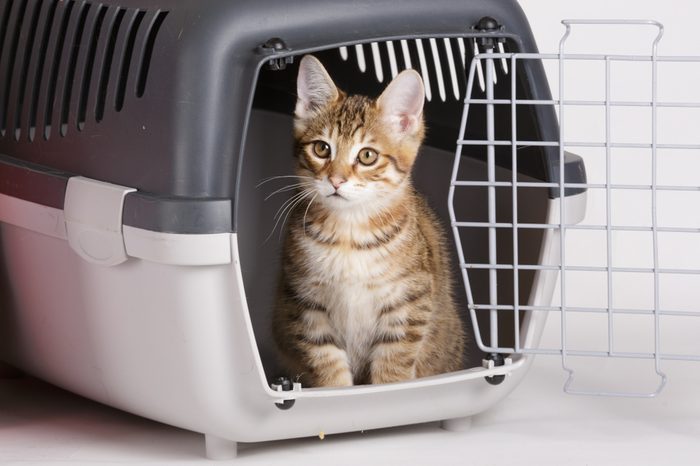
Cat carriers
It’s no news flash that most cats hate getting stuffed into a cat carrier. But it’s not the box itself that’s the problem—it’s the veterinarian they usually have to visit when they get closed up in there. Vitale says that with some work, you can change their negative associations with more positive ones.
For starters, “leave the carrier out with a blanket inside so the cat can explore the carrier, and even sit in it at times where the cat is just relaxing at home,” she says. You can put treats and catnip inside too. Once your cat ventures inside on its own, offer some praise and treats. If your cat gets comfortable, try shutting the door for a minute and then opening it and dispensing even more goodies.
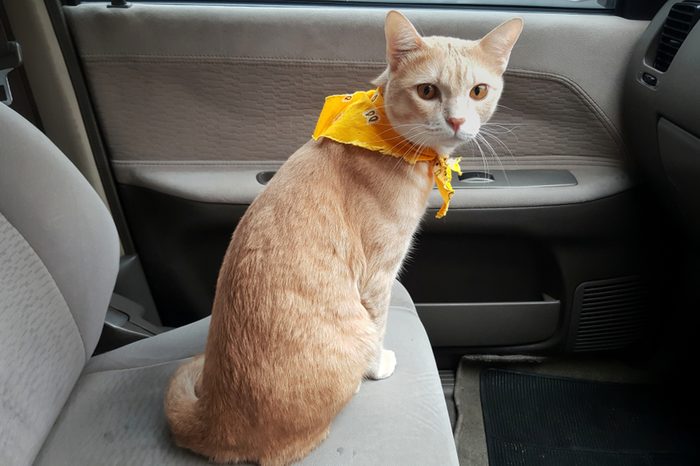
Riding in cars
Carriers and car rides usually go together, but the good news is that some cats can be desensitized to cars, too. “One thing owners can do is to take their cat for rides around the neighborhood, while praising the cat for doing a good job,” Vitale says. She suggests keeping it very short at first, perhaps 5 minutes or less, and—you guessed it—giving lots of treats, pets and play (whatever your cat loves most) when you get home.
When and if your cat seems to be getting more comfortable, make the rides a little longer.

Other cats
Lots of cats love having cat companions, but it can take a long time for them to warm to the idea. If you just drop a new cat in your home, your current kitty will likely act out with fear or aggression. This doesn’t mean you have to give one up! It’s worth it to try to make it work.
“Cats show great flexibility in their social behavior,” Vitale says. She suggests separating the cats into different areas of the house and slowly reintroducing them to one another using a method called “Scent, Sight, Touch.”
- Take a toy or blanket from each cat and swap them. Give each cat the other cat’s scent item, along with lots of praise and rewards, so they associate the smell with good things.
- After doing this a few times, set up a space where the cats will be able to see one another through a physical barrier, like a screen door or gate. Then feed them, so they start to associate positive feelings (food) with the sight of the other cat.
- After a few successful feeding sessions, you can try to introduce the cats without a barrier. Distract each cat with toys during their first meeting in the same room, so they have less time to worry.
“If owners go slow and give lots of rewards, many cats can learn to accept a companion cat,” Vitale says.

Taking baths
Some cats are intrigued by water, but most cats instinctively prefer to not get wet. The good news is that many cats don’t need to be bathed—regular brushing is enough to remove detached fur and shake out loose dirt. If, however, your kitty rolls around in something noxious, or you have a long-haired breed that requires grooming, it’s best to keep it quick.
The ASPCA recommends having everything ready and nearby, including a cat-specific shampoo, towels, a washcloth and a pitcher if you don’t have a handheld spray nozzle on your kitchen sink. Wear long rubber gloves to protect yourself, and don’t dunk your cat’s head under the water (wash their head and ears with the washcloth). Dry your cat with a towel, not a hairdryer, unless your cat is OK with the noise.
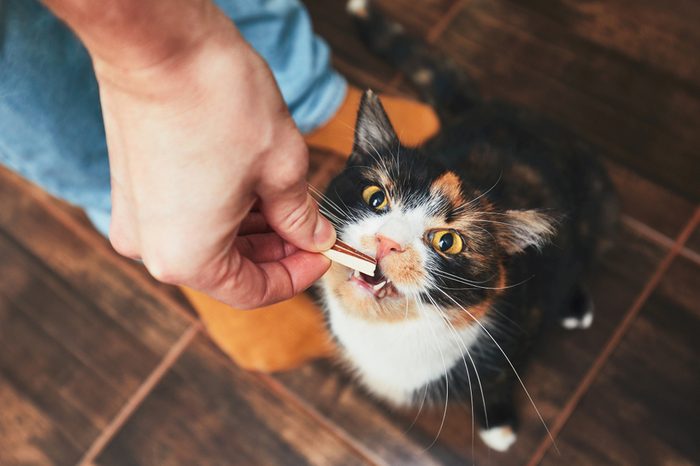
Taking medication
What do cats hate? Taking pills. You won’t like it either, because pilling a cat is hard! To make the process easier, you can try wrapping the pill in a piece of meat or cheese like you would a dog, but according to the All Feline Hospital in Lincoln, Nebraska—and you, if you’ve tried it—cats are usually too smart to fall for this.
Commercial pill pockets are another option, but again, it’s hard to get cats to eat them. It might work if your cat’s not a big chewer and really loves the treat. Another way to give cats pills is to grind up the pill and mix it in with whatever food your cat likes most—the trick is that the cat has to eat it all to get the full dose.
If that fails, and if the medicine is bitter it probably will, you will just have to put the pill down your cat’s throat using your fingers or a “pill popper.” Unfortunately, even if you hold your cat’s mouth shut in an attempt to get them to swallow, the All Feline Hospital says most pills just sit there in their throats until they dissolve. Yuck. Try chasing the pill with a syringe of water to help it go down.

Old food
Lots of cats will turn their noses up at food that’s been sitting out all day while you’re at work. Small, frequent meals throughout the day actually matches their natural feeding behavior more closely, so if you’re able to dole out their food several times a day rather than free-feeding a full bowl, Vitale recommends it.
“This also gives the cat an event during the day to look forward to, which may help alleviate behavioral issues,” Vitale says. If you won’t be home to dispense multiple meals, Vitale again recommends food puzzles. “This would allow the cat to get the food out at their own pace, give them enrichment to focus on while alone and [keep] food from sitting out too long,” she says.

Dog visitors
Dogs can be as scary (or scarier) than kids, and Vitale suggests introducing your cat to both in more or less the same manner: “Always allow cats to sniff, then see the dog or child before physical interactions occur.” Make sure, too, that your cat has a safe, accessible place to hide if he’s just not interested in participating.
Never allow a dog to chase a cat or to prevent the cat from leaving or jumping up to escape the interaction. Even if the dog seems playful, your cat might not see things the same way.
Why trust us
At Reader’s Digest, we’re committed to producing high-quality content by writers with expertise and experience in their field in consultation with relevant, qualified experts. We rely on reputable primary sources, including government and professional organizations and academic institutions as well as our writers’ personal experiences where appropriate. We verify all facts and data, back them with credible sourcing and revisit them over time to ensure they remain accurate and up to date. Read more about our team, our contributors and our editorial policies.
About the experts
|
Sources:
- ASPCA: “Cats and Babies”
- ASPCA: “How to Give Your Cat a Bath”
- All Feline Hospital: “Pilling Your Cat”
- Kristyn Vitale, PhD, assistant professor of animal health and behavior at Unity Environmental University
- Dennis C. Turner, author and editor of The Domestic Cat: The Biology of its Behaviour



















